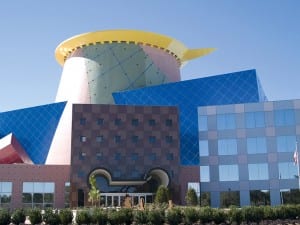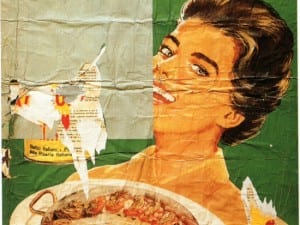Louisiana Museum of Modern Art‘s big autumn exhibition Self-Portrait turns the focus on the self-portrait as a genre throughout the 20th and 21st century, as shown in 150 works by a wide variety of international artists from early modernism until today. How does one represent oneself? What are the connections between self-portraiture and self-representation? Can a self-portrait be an objective, neutral representation, or should it depict the complex mind, personality and life-conditions of the artist? Can a self-portrait at all portray a person’s composite identity? These are some of the questions that the exhibition raises, questions that extend beyond the artist’s own universe into the life of the viewer, and this is exactly the source of the fascination exerted by the multiplicity of works shown in the exhibition.
The self-portrait is a classic, well-tried but also intense and almost raw-skinned genre that has involved a wide range of idioms throughout the history of art. The exhibition is showing works from the 20th century and tells the story of the transformations of self-portrayal over time. As a genre the self-portrait has undergone radical developments, and often it results not only in images of the artist’s idea of his or her own identity, but just as much in partial images of our time, of how we see ourselves in general.
Self-Portrait is based on a wide selection of artists, all of whom have worked naturalistically in their oeuvres with the self-portrait as a genre. The 150 works in the exhibition are divided into nine groupings based on thematic motif rather than chronology.
The Artist in the studio, the first classic group of works, shows among other things examples of the artist shown with easel, brush and palette. Here we see works by Picasso, Gabriele Münter and Marc Chagall. The category Pioneers shows works by the early modernists, including Edvard Munch, Richard Gerstl and Frida Kahlo, and how they deliberately show themselves such that the gaze becomes important to the way the viewer understands the personality. In the category The Course of life we see both works by artists who paint their life-memories into the work, and works that shed light on the artist through the phases of life, for example Paula Modersohn-Becker, Giorgio de Chirico and Diego Rivera. Simplification covers the field where the artists work more abstractly with the self-portrait, although there can be no doubt who they are portraying; this applies for example to Miró, Jean-Michel Basquiat and Marcel Duchamp.
In Dissolution the staging of the individual psychology becomes more intense, subtle and original, and faces are shown with sometimes distorted features and with a painting technique where the artist partly dissolves the subject, as in works by among others Francis Bacon, Chuck Close and Chaïm Soutine. Type Cast takes its point of departure in gender, race, social background and political conviction, and here the artist is presented with a kind of message. In the category Exhibitionism this tendency is intensified in works with strongly feminist subjects, for example by the Austrian artist Elke Krystufek, which also involve a dynamic relationship between private life and mass culture.
Mirrors along with The Artist in the studio, is probably one of the archetypal motifs in the self-representation of the visual artist. In this section we see Helen Chadwick’s work Vanitas II, 1986, which functions as a paraphrase of Baroque painting. Under the heading Irony we show Sarah Lucas’ Self-portrait with Fried Eggs, 1998, with the eggs placed on each breast, and Kippenberger’s naturalistic self-portrait, Ohne Titel, 1996, of an approximately 40-year-old man whose shadow has a female shape.
Self-Portrait, 14th September until 13th January 2013, Louisiana Museum of Modern Art, Gl. Strandvej 13, 3050 Humlebæk, Denmark. www.louisiana.dk
Credits:
1. Jean-Michel Basquiat, Self Portrait, 1986, MACBA Collection. Government of Catalonia Art Fund. Former Salvador Riera Collection. Photo: Giga-Mirco Art
2. Rudolf Stingel, Untitled, 2006, Courtesy of the aritist. Photo Ellen Wilson
3. Frida Kahlo, Self Portrait with Monkey, 1945, Robert Brady Museum, Cuernavaca, Mexico. Photo: Antonio Berlanga
4. Sarah Lucas, Self-Portrait with Fried Eggs, 1996, ©The Artist, courtesy Sadie Coles HQ, London
5. Egon Schiele, Self-Portrait with Peacock Waistcoat, 1911, Ernst Ploil, Vienna





